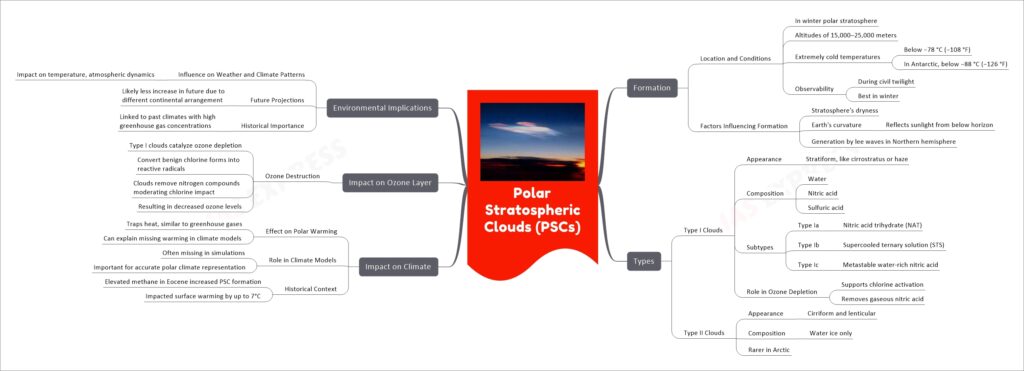Polar Stratospheric Clouds (PSCs)

Polar Stratospheric Clouds (PSCs) are unique atmospheric phenomena occurring at high altitudes in the polar stratosphere, particularly during the extreme cold of polar winters. These clouds, observable during civil twilight, are classified into two main types: Type I, composed of water, nitric acid, and sulfuric acid, and Type II, consisting only of water ice. Type I PSCs play a crucial role in ozone depletion by facilitating the conversion of benign forms of chlorine into reactive, ozone-destroying radicals and removing nitrogen compounds that would otherwise moderate this destructive effect. PSCs also influence climate, particularly polar warming, by trapping heat similarly to greenhouse gases. Their formation and behavior have significant implications for climate modeling, offering insights into past climate conditions and future projections. Their impact highlights the intricate connections between atmospheric phenomena, climate change, and environmental health.
If you like this post, please share your feedback in the comments section below so that we will upload more posts like this.

